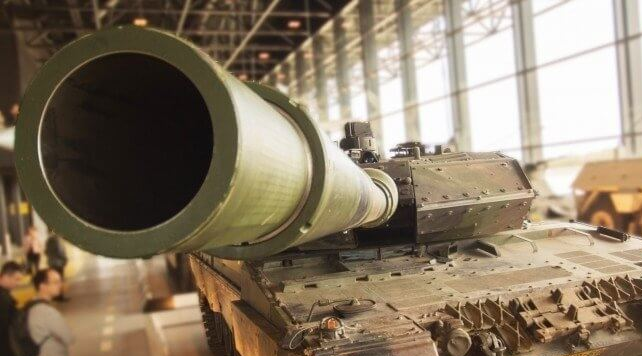Ergonomic seats to all
Blog

Armed Forces Need the Most Advanced IED Blast Protection Technology
Despite the continued military innovation seen this century, arguably no weapon has shaped the modern battlefield in places like Iraq and Afghanistan more than the IED. Short for Improvised Explosive Device, these low-cost hand-made weapons frequently take the form of roadside bombs, consisting of an explosive element, such as an artillery shell, attached to a mechanism for detonating them. While undoubtedly low-tech in their design, these weapons have proven extremely effective as a complement to more standard weapons such as bullets, mortars, and grenades. They have become a major component in modern asymmetric warfare, in which less well-trained and funded insurgents take on larger, better equipped military forces. They are used to target both soldiers and civilians alike.
IEDs can differ in their shape, size and design; can cause heavy blasts and severe fragmentation; and can be activated in a variety of ways, whether it’s by radio, cell phones, wire, or more sophisticated means such as using infrared. These variations and lack of standardization can make them immensely difficult to detect, adding to the threat they pose. Despite billions having been spent on IED blast protection-by-detection solutions that range from signal-jamming technology to drones which look for insurgents planting IEDs, there is no 100% effective way of ensuring that IEDs will never damage their target.
When they do explode as planned, the results can be devastating. An earlier report claimed that, by the end of 2007, IEDs had already risen to become the most common cause of coalition deaths among the US-led force – responsible for approximately 63% of deaths. In recent years, IED incidents have occurred in 66 countries, with eight countries recording more than 1,000 civilian casualties as a result of the weapons.
While DtD (Defeating the Device) countermeasures are essential in the battle against IEDs, so is preparing the forces. As IEDs become even more widespread in the years to come, IED blast protection initiatives will only become more important.
The most common way to protect troops against improvised explosive attacks is by armoring vehicles. One of the most noticeable impacts of IEDs on modern warfare is to change the way that troops travel; frequently sticking to large armored vehicles and sometimes avoiding roads entirely. Vehicles such as the HMMWV (High Mobility Multipurpose Wheeled Vehicle or “Humvee”), previously widely used in warzones, were suddenly vulnerable to attack – with flat bottoms, low ground clearance, and insufficient armoring. But while better armoring can help the survivability of military vehicles, they don’t solve all the problems.
Soldiers travelling in armored vehicles are still exposed to immense shockwaves during an IED blast. Underbelly explosions produce a supersonic shockwave which travels through soil, sending high-velocity dirt, rocks, and air crashing into the underbelly of a military vehicle. These shockwaves can cause spinal injuries and severe damage to internal organs, which can carry a high probability of death. The shockwaves can also affect the body in other devastating ways, such as permanently damaging eyes (even without the presence of flying shrapnel) or triggering pronounced neurological effects.
It is therefore crucial to make sure that these troops, and not just the vehicles they are travelling in, have adequate blast protection. MOBIUS Protection Systems specializes in designing and manufacturing blast-protected seats. These are based on the company’s patented SPIRAL technology, a lightweight, single element system which provides energy-absorbing capabilities in the event that the vehicle they are fitted in is struck by a blast.
Our SPIRAL tech has repeatedly achieved outstandingly low Dynamic Response Index (DRI) measures when it comes to testing. This important benchmark is achieved even during testing involving multi-hit assaults. Every element of our blast protection seating system has been specially designed to protect against such attacks, emphasizing safety. Boasting a high ergonomic design, our seats isolate and shield crew members from the vehicle’s body. In the event of an underbelly explosion, should a vehicle such as an armored personnel carrier drive over an IED or landmine, MOBIUS’ seating system will attenuate the force of that explosion.
Any modern military force needs to be highly versatile. We understand that imperative completely, which is why we set out to create a blast protection seating system that can be used in almost any modern military vehicle. That includes Main Battle Tanks, Infantry Combat Vehicles, Armored Personnel Carriers, MRAPs, MPVs, Light Tactical Vehicles, and more. Our seats, which weigh between 17 to 22 kg, can be mounted using the wall, floor, or ceiling. We have designed seats to fit a range of functionalities, such as Commanders, Gunners, Drivers and Troops. We have also ensured that, thanks to self-adjusting dynamic attenuation, our seats provide protection for whoever needs them. Whether it’s the lightest 5th percentile female or a heavyset 95th percentile male, MOBIUS’ unique seating solution is ready and waiting to help protect those who put their lives on the line for others.
If you’re in charge of specifying requirements, sourcing and placing orders for military vehicles, you undoubtedly realize that blast-protected seats could play a valuable role in helping improve the work you do, ensuring success on the battlefield, by minimizing injuries and deaths. If we can be of any assistance, please get in touch with MOBIUS. We have a reputation established globally, with more than a decade of proven success.
Photo on Foter.com